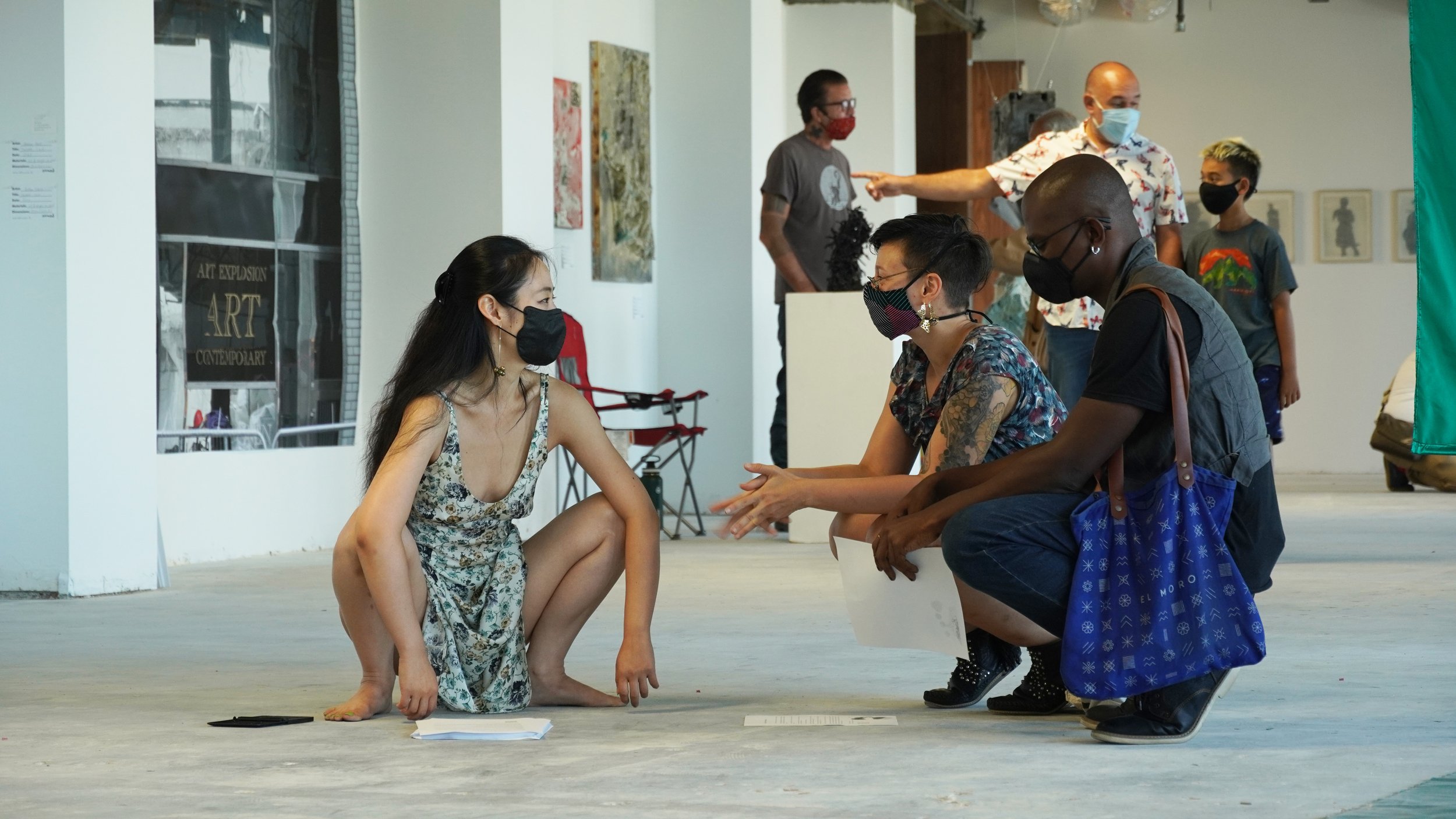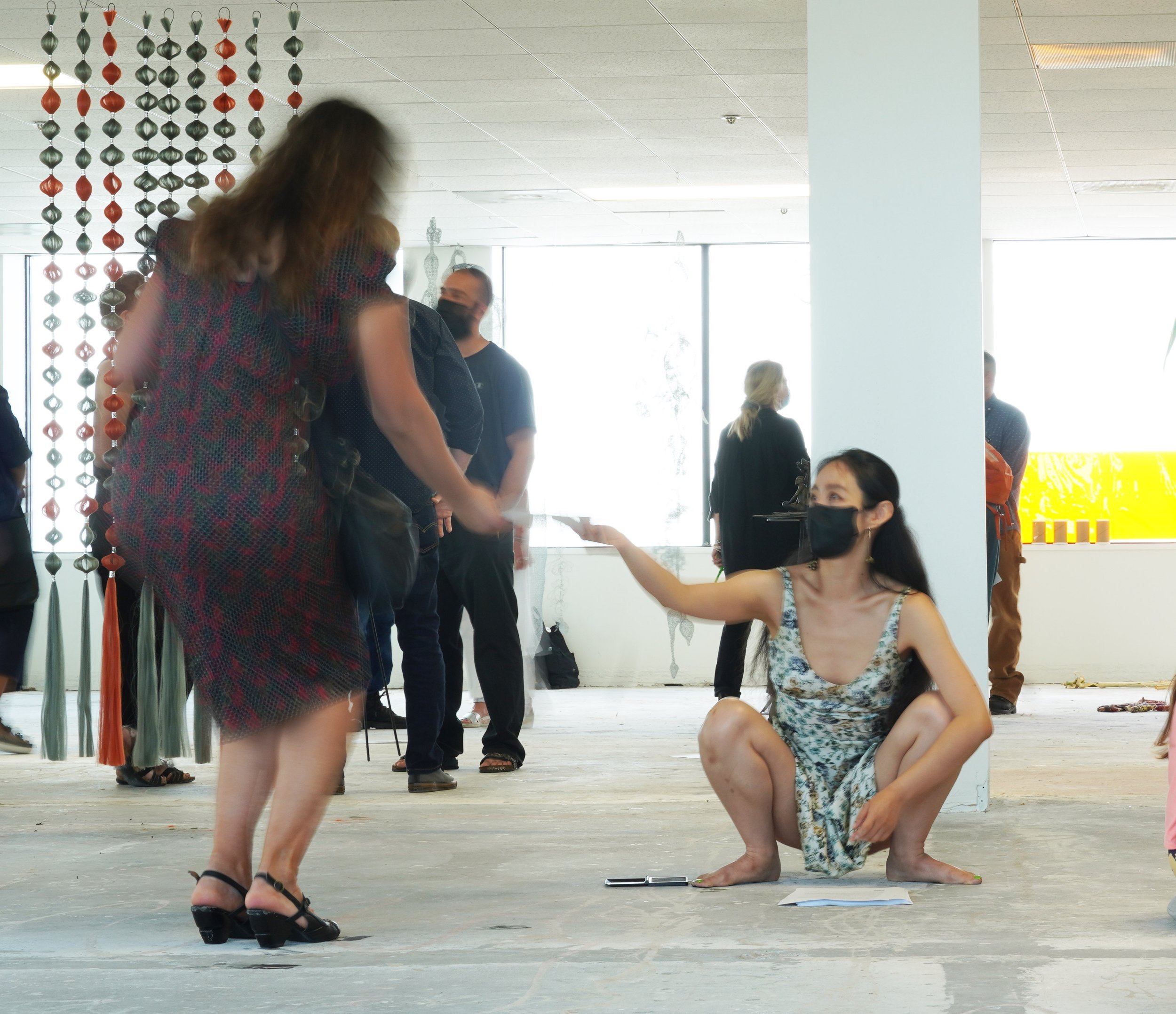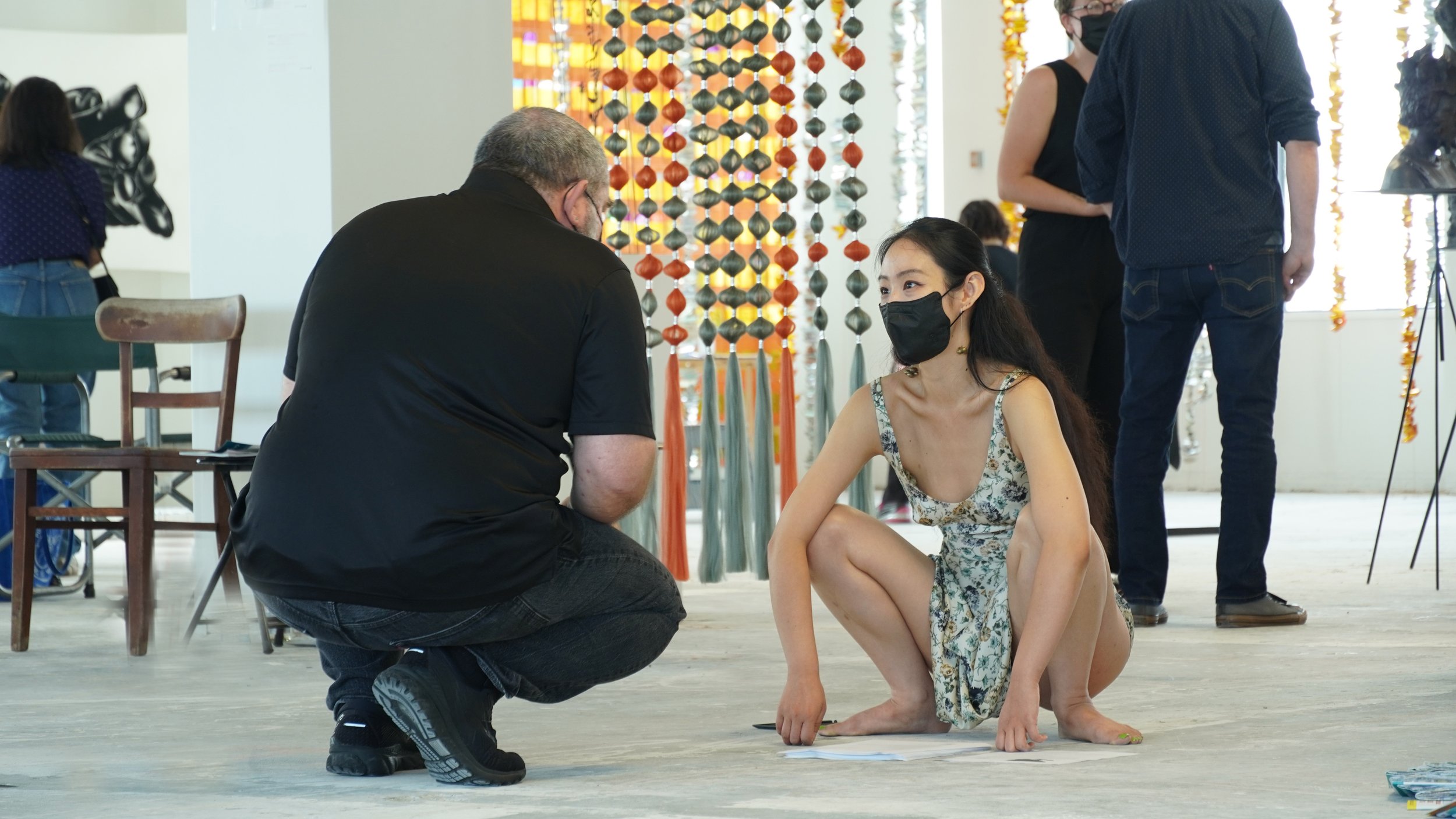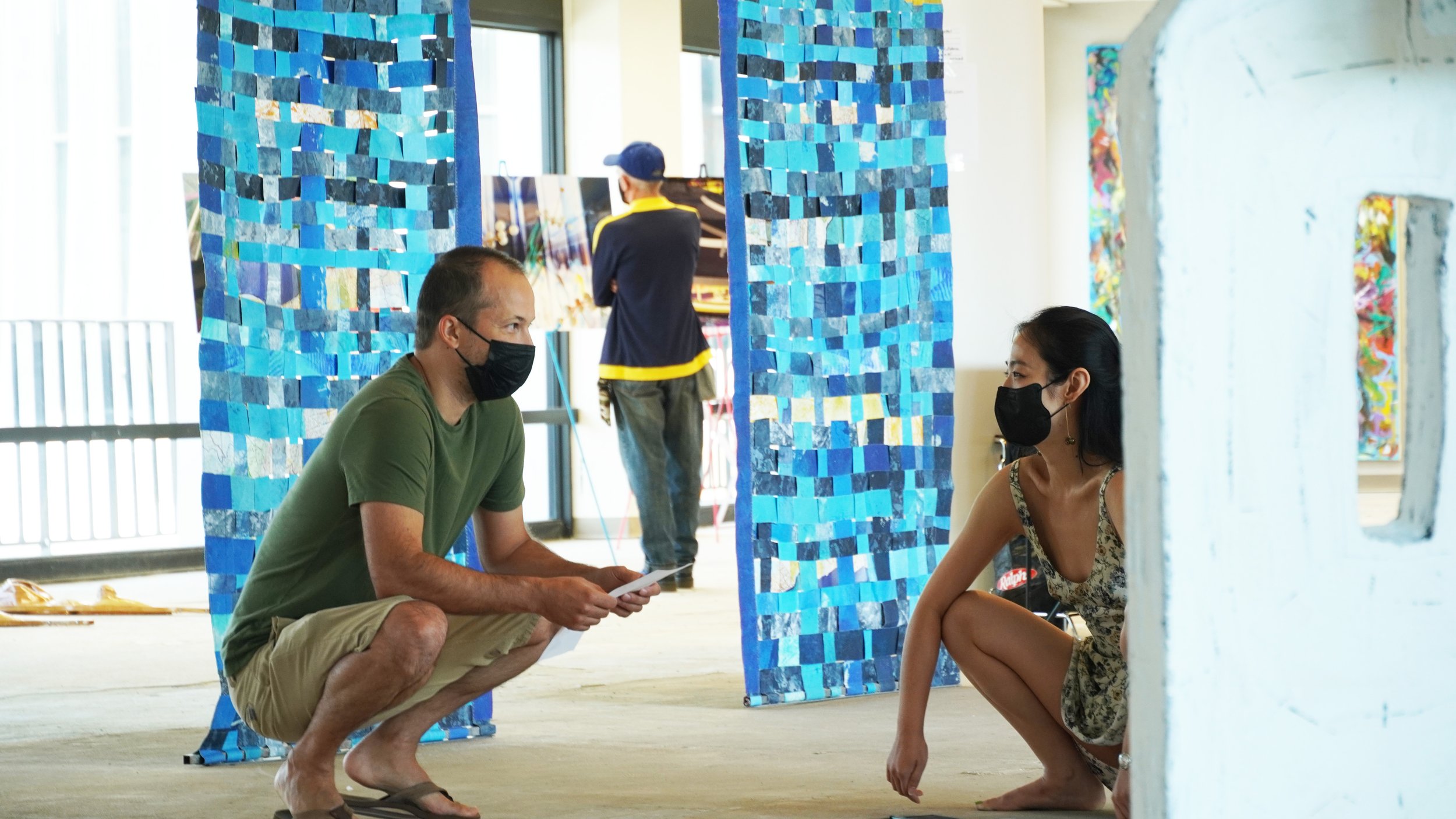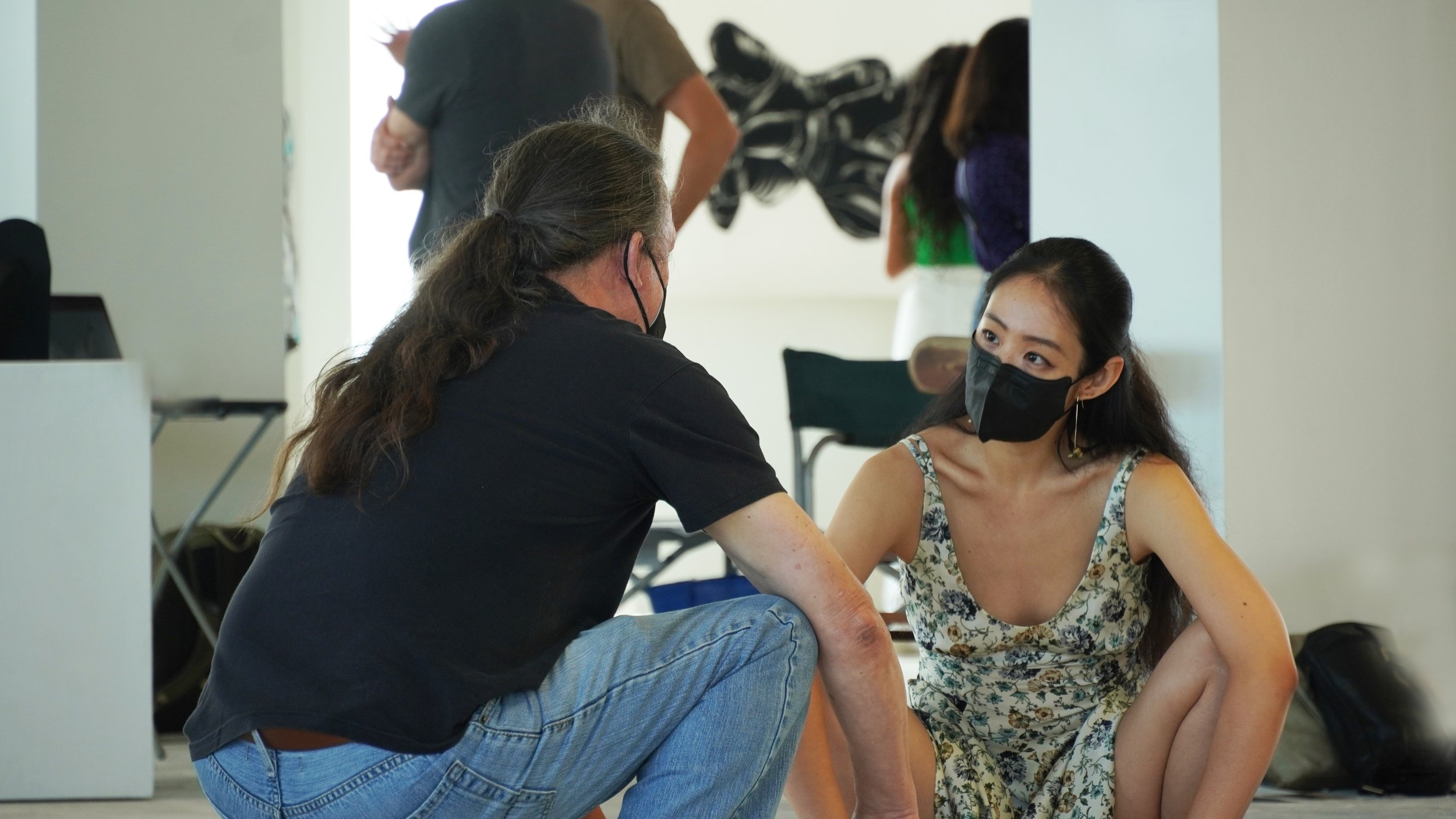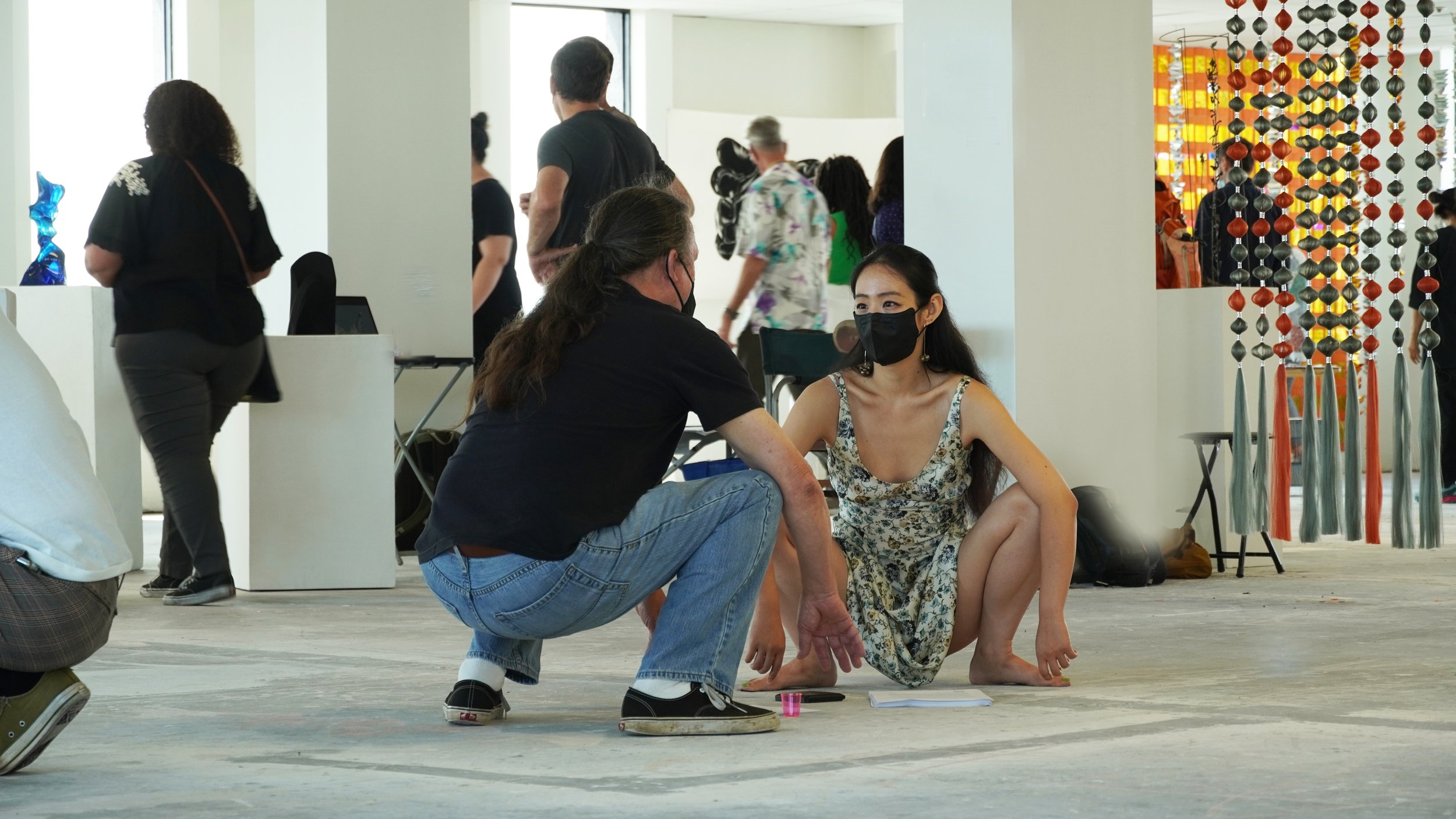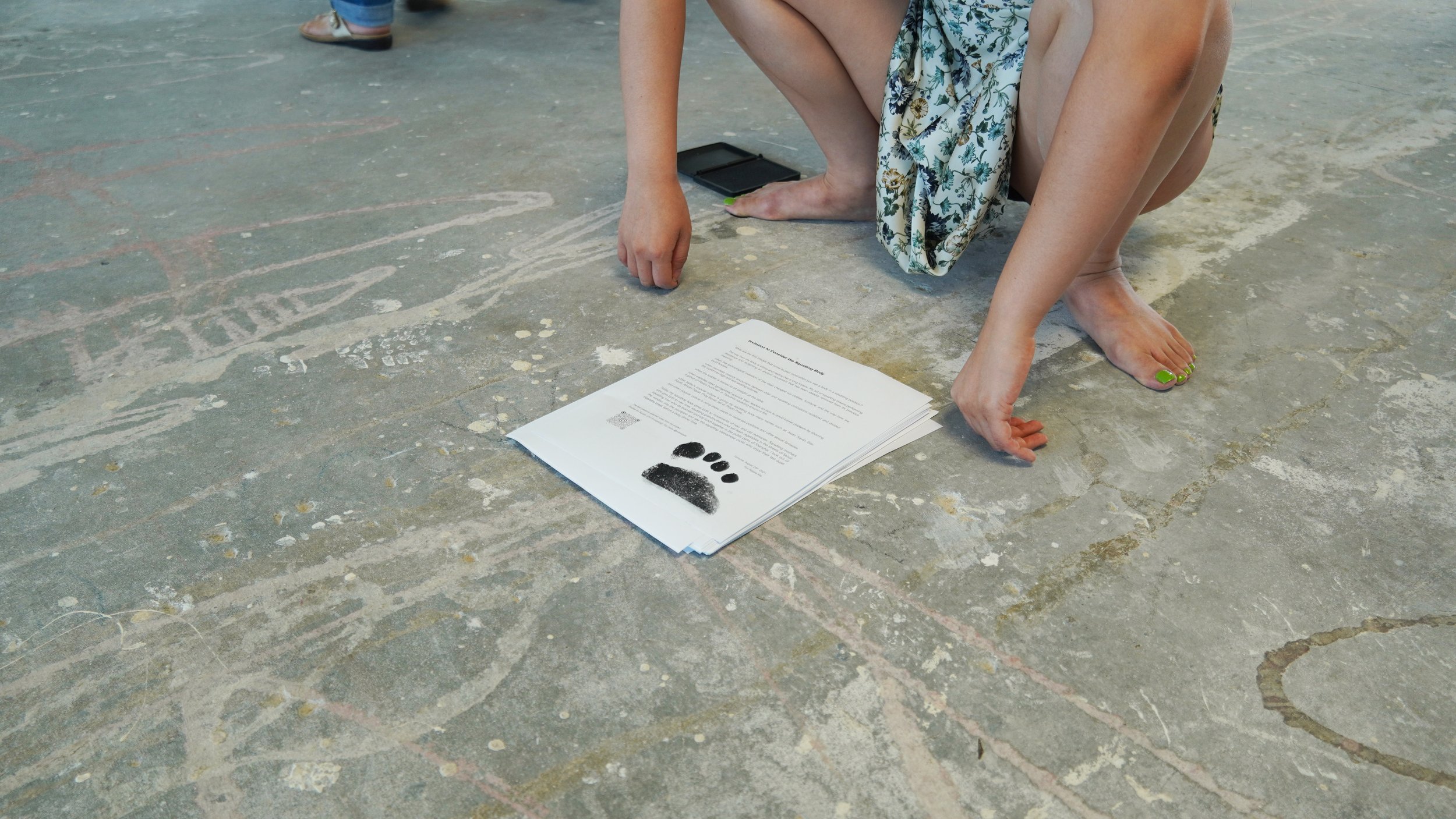Songs from the Navel to the Spine (Studies on Squats III), 2022
Yon Natalie Mik
Commissioned and curated by Archive, Pirelli HangarBicocca
Performed by Yon Natalie Mik and students of Nuova Accademia di Belle Arti (NABA) with public audience for the Choreopoethics Program presented as part of the Milano Re-Mapped Summer Festival.
Photos by Lorenzo Palmieri
Studies on Squats by Yon Natalie Mik is an evocative exploration of embodied resistance and political movement, using the multifaceted posture of the “Asian Squat” as a lens through which broader concepts of public protest, migration, illness and resilience are examined. In Studies on Squats, the body—in its most vulnerable and potent states—becomes a speculative site for reclaiming agency, crafting new forms of protest that draw from care, ancestral strength, humor and eroticism. This posture, rich with cultural and historical resonance, serves as an entry point to imagine ways the body can engage in acts of defiance against systems of oppression. Studies on Squats invites the public to consider how dance, poetry and choreographic strategy can serve as tools for envisioning futures where artistry empowers those enduring systemic social injustices to transform their realities.
Handouts (Studies on Squats II), 2021
Yon Natalie Mik
Commissioned by Torrance Art Museum
Performed by Yon Natalie Mik with the public visitors as part of the NOMAD art show presented by the Torrance Art Museum, California
Photos by Daniel Kim
The series Studies on Squats explores the social choreographies and kinetic tales of the “Asian Squat” (a flat-footed squatting position used for resting and sitting in many Asian countries) revealing layers of migration, race, cultural diplomacy, sexuality and colonial histories.
Empty Chair (Studies on Squats I), 2020
Yon Natalie Mik
Curated by Rina Nakano, presented at Treptow Atelier
Photos by Michele Caliari
The series Studies on Squats explores the social choreographies and kinetic tales of the “Asian Squat” (a flat-footed squatting position used for resting and sitting in many Asian countries) revealing layers of migration, race, cultural diplomacy, sexuality and colonial histories.






